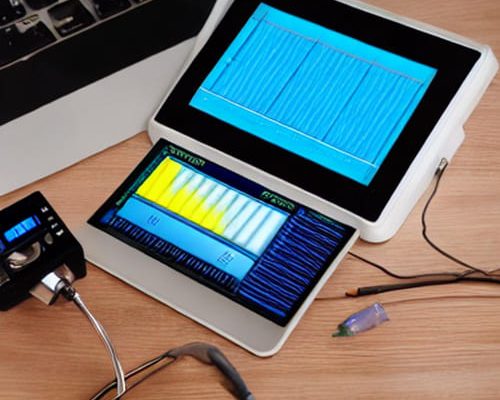Principles of Power Quality Work in Chile:
The quality of the power supply has a direct bearing on the fundamental functionality and performance of the apparatus connected to the distribution network. The equipment is believed to operate as intended and to have a lifespan roughly equivalent to the specified value.

In addition, it is anticipated that the network will be sufficiently stable to prevent issues such as inferior output and lost functionality. There are numerous issues with the electricity system’s power quality. Regardless of their duration, these power quality disruptions may cause damage to your device. To prevent equipment failure, it is essential to sustain power quality. This article will examine the research necessary to evaluate the dependability and quality of power. The subsequent step is the examination of various power quality systems and methods for evaluating the effect and the control. In contrast to dependability, which is concerned with protracted power outages, the effects of power quality disturbances are not immediately apparent. In other instances, however, a power quality interruption has an immediate impact due to process delays or damaged equipment. This is particularly applicable to delays, gaps, and transitions. In some instances, the effects of the power quality disruption may not be immediately apparent. The degradation of equipment is one example. As a result, equipment degradation goes unchecked for years. In other situations, power quality issues will result in additional losses that are deemed unavoidable and are therefore ignored.

The Consequences of Substandard Electricity:
Direct monetary impacts include:
- Manufacturing deficits
- Costs associated with rebooting a process are incurred.
- Equipment damage and maintenance costs
- More difficulties and delays
- Concerns for the welfare and safety of individuals
- Monetary penalties associated with contract breaches
- Financial penalties for environmental violations
- The disruption increased the cost of utilities.
The following are indirect economic effects:
- The costs incurred by a business as a result of a revenue or income delay.
- The financial repercussions of losing market share
- How much it will cost to rebuild brand value
Among the social and economic effects are:
- The rise in temperature within a building may be detrimental to occupants’ health, safety, or productivity.
- A personal injury or worry
- If the change in power quality goes unnoticed, an electrical hazard may result.


Understanding the Sources of Poor Power Quality:
The voltage, frequency, and waveform of a power supply system are evaluated to determine its power quality. Nonetheless, a number of factors impact power quality. This blog addresses the following issues concerning the purity of power:
- Voltage Constancy
- Voltage Disparity
- The Number of Syllables in Current
- Voltage That Is Flashing or Fluctuating
- Voltage Dips (sometimes referred to as “sags”) and Interruptions
Other phenomena, such as surges, transients, inter harmonics, and cacophony, have received less attention due to their rarity.
1. Voltage Constancy
The magnitudes of stable-state voltage correspond to the magnitudes of long-term sustained voltage (minutes or hours). The primary consequences of protracted high voltage (overvoltage) or low voltage (undervoltage) are equipment failure, a rise in energy consumption, and system malfunction.
2. Voltage Disparity
Unbalanced voltage is frequently associated with increased losses, particularly in induction and three-phase motors.
- Bearing deterioration and reverse torque are the results.
- Stator and rotor temperatures rise further
- The current carrying capacity of installation cables is decreasing.
- On the neutral conductor, losses have increased.
- The use of wires wastes more energy.
3. The Number of Syllables in Current
All energy users generate and introduce harmonic currents into the power system. The fundamental frequencies of alternating currents with harmonic currents are multiples of 50 hertz. Computers, variable speed drives (VSD), and discharge lamps are the most common non-linear electrical apparatus that emits harmonic currents. Harmonic currents are particularly damaging to the installation and the power distribution system. Harmonics have several negative effects, such as fractured components, damaged installation parts, component loading, inefficient use of the installation’s current carrying capacity, shortened component life, and ineffective operation of protective components.
4. Voltage That Is Flashing or Fluctuating
Flicker is an envelope modulation of voltage waveforms. As a result, incandescent light sources exhibit cyclical fluctuations in light intensity. This irregular variation in light output may cause discomfort, decreased productivity, migraines, and, in uncommon cases, seizures in some individuals.
5. Voltage Dips
Voltage sags and interruptions do not affect the majority of equipment; however, lengthier interruptions frequently result in output loss due to equipment malfunctioning. Sometimes, the cost of a lengthy interruption is observed to be logarithmic rather than proportional to its duration. According to experts, the following variables substantially impact the cost of a prolonged interruption:
- In the manufacturing industry, the economic difference between a disruption spanning one second, one minute, and one hour is considered to be negligible.
- The event’s date, time, and location (weekday, vacation, daytime, midnight).
AEMO calculates the value of customer dependability (VCR) to assess the monetary influence of disruptions on all customers. Even if the majority of these figures represent consumers’ willingness to pay to avoid a disruption, it is anticipated that this willingness to pay will be strongly correlated with the actual cost. According to these calculations, a one-second interruption costs approximately 20% less than an hour-long interruption.
How Can Power Quality Issues Be Mitigated?
CareLabs offers numerous services to identify and evaluate power quality problems. Included are:
- Load Flow Analysis: This analysis is conducted based on the operating conditions. It calculates system losses, voltage levels, power factor, and flow rates.
- This technique employs computer algorithms to identify and predict prospective harmonic problems. On the basis of the outcomes, reduction measures are also proposed.
- Analysis of Transients and Surges describes the causes of transients and surges.
- This study will monitor the voltage’s short-term rise and decline, as well as its value and direction.
- This study will determine the optimal reactive power at the load and distribution extremities.
- This initiative would monitor and coordinate captive electricity to meet demand, reduce energy surcharges and fuel consumption.
CareLabs analyzes and evaluates power quality using ETAP (Electrical Transient Analysis Program) – Electrical Transient Analysis Program software. The best available software for performing calculations and simulations for all electrical system components and ensuring equipment security. We conduct power quality assessments in every significant city in Chile, including Santiago, Valparaíso, Concepción, and Viña del Mar. CareLabs offers the finest service possible to enhance the dependability and quality of your electrical system. Contact us immediately to schedule a power quality inspection or receive a quotation!



